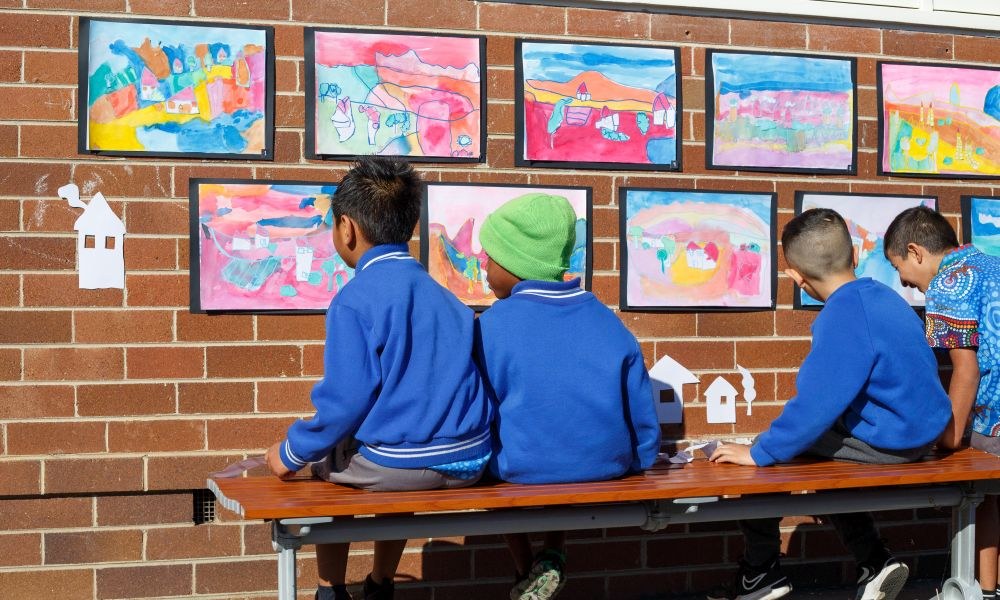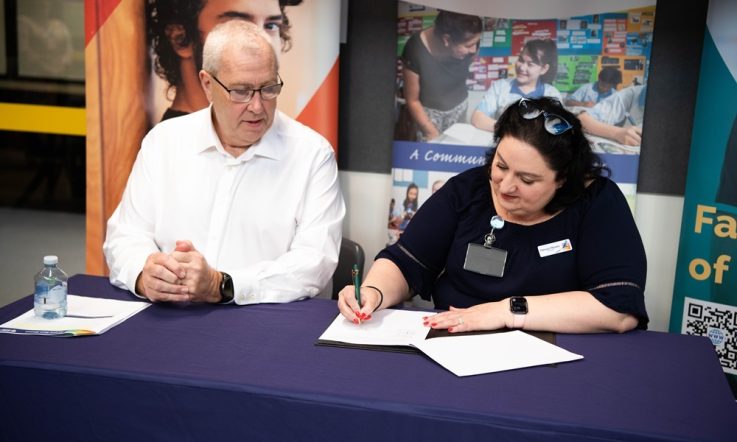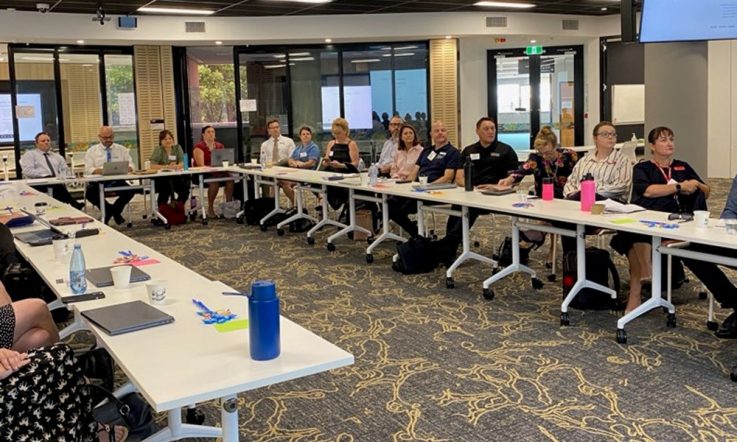For some students and families, barriers related to health, wellbeing and social services can significantly hinder their access to learning. Creating a school hub is one solution. The Mirrung program at Ashcroft Public School in New South Wales is a bespoke model designed around community priorities. In this article for Teacher, Principal Poppy Loueizi and NSW Council of Social Service (NCOSS) CEO Cara Varian share details of what prompted the initiative, how it’s lifting outcomes for primary school students and their families, and the positive impact on everyone involved, including support staff and teachers.
Education is key to break cycles of disadvantage, yet poverty remains one of the biggest barriers for children to reach their full potential at school.
How can a child learn if they are sick, underfed or navigating trauma? Worse still, if access to childhood health services have years-long waitlists? What if your parents can’t speak English? Or they’re struggling with complex issues of their own, and don’t have the support around them to cope?
Run through a philanthropically funded partnership with NCOSS, the ‘Mirrung’ program is a wellbeing hub located on-site at the P-6 Ashcroft Public School, in the southwestern suburbs of Sydney. ‘Mirrung’ means ‘belonging’ in the Dharug language. Part of the NCOSS’ School Gateway Project, it innovates access to learning by bringing health and social services to students and families.
Located within the school is a team of staff to ensure that children and families can access a paediatrician, essential groceries and pantry items, breakfast and after-school clubs, parent education workshops (English, art, computer skills), a café and lounge area for parents and support to help families navigate housing, legal, and social services.
Unsurprisingly, the impact goes beyond improved school attendance and student learning – building a happier, healthier and more connected community of children, families, support staff and teachers.
Through a bespoke model that changes in response to community needs and priorities, Mirrung’s commitment to community is constant.

The Mirrung model. Image credit: NCOSS.
Through holistic, family-centred care, Mirrung is proof that when health and social services join forces with education, the isolation, exclusion and judgement that come with poverty are challenged. And the outcomes for student, family and community learning and wellbeing is something quite remarkable.
For example, in 2022 41% of Ashcroft students had an attendance rate of 90% or more; in 2024 that figure had risen to 64%. Learning outcomes are also improving – 2024 data show 36% of students achieved stage-appropriate outcomes in comprehension (up from 29.5% in 2023); 28% achieved stage-appropriate outcomes in number and place value (up from 18%); and 30.5% of Ashcroft’s year 1s achieved age-appropriate outcomes in the Phonics Screening Check (up from 26%).
The principal’s perspective
Poppy Loueizi reflects on why a more innovative and methodical approach was needed at her primary school, and the positive impact of the Mirrung program.
At Ashcroft Public School, student learning is at the forefront of everything we do, but we know our community is among the 1% most disadvantaged in NSW, and the barriers our students face are diverse.
Before Mirrung, with over 300 students from preschool to year 6, we were seeing growing numbers of children dealing with trauma, unmet health needs, and instability at home – impacting attendance, learning, and engagement.
Teachers and executive staff were stretched, spending more time managing crises than teaching. The wait for a paediatrician was 2 years; our 5-year-olds didn’t have that time, and their families couldn’t afford private care. We needed a more innovative and methodical way to support the community and improve learning, so we began discussions with NCOSS in 2021.
I’ve been principal here for 7 years. Since Mirrung started, student attendance and academic performance has improved and there have been many other positive changes. For the first time, it feels like we’re on top of things. Children and their families are happier because their needs are met, and strengths recognised.
Our Mirrung Impact Report 2024 (NCOSS, 2025) found 89% of students felt a positive sense of belonging – 20 points above the state average.
Extracurricular activities have been a huge success. In 2021, only 7 students out of 300 participated in out-of-school activities. Now, nearly all do. We run afterschool clubs every day and change them each term – they fill up within 24 hours.

Students, their families and the community come together to enjoy the annual Ashcroft Public School Art Exhibition. Image credit: NCOSS.
We’ve also focused on boosting parents' sense of belonging because we knew loneliness was a big problem in our community. One highlight was a group of 6 mums who studied together for their Australian citizenship exam. It boosted their sense of pride, achievement and connection to being Australian. It was just beautiful.
We also run workshops to help parents become classroom helpers or learn other skills. It’s heart-warming to see them confident, productive, and supporting each other.
As a society, we take being part of a community for granted. Mirrung has helped mums go from not leaving the house to enrolling in TAFE. When children see their parents learning, their own attitude toward education transforms. It's simple, but powerful.
All of these initiatives are linked back to the classroom and our education goals – improved attendance, academic growth and strong wellbeing. And an added bonus, our teaching staff report feeling more confident in supporting their students; here are 2 reflections from our teachers, gathered during the latest evaluation (NCOSS, 2025).
[The] main priorities with Mirrung are all intertwined with what we do in a classroom. For example, improved attendance. We can’t teach them if they’re not there. Wellbeing in terms of food and all that. A child can’t learn if they’re hungry. Or if they haven’t got clothes. Or even a home to go home to. So, the fact that Mirrung help in all those fundamental needs, that’s what gets them to school and that’s what helps us do our job.
It has bridged the gap between the classroom and home life. The way Mirrung has been embedded into our school has helped target student needs (and their families) for social, emotional and wellbeing. This has helped us to care for them in the classroom as their basic needs are taken care of.
The community perspective
Cara Varian, CEO of NCOSS, shares the vision for the School Gateway Project, how Mirrung is meeting complex community needs, and potential challenges to future scalability.
NCOSS is the peak body for the social services sector in NSW. NCOSS envisioned the School Gateway Project as a way to build connection between families and schools, and the very fragmented and difficult to access social and health service systems, creating the foundation for early intervention before issues escalate into crises.
That’s what Mirrung does – by offering a space where families feel welcome to drop in for a coffee, use the internet, speak with teachers, get help with forms, or collect food and supplies. This open, supportive environment for families experiencing really difficult challenges from housing insecurity to addiction issues or domestic violence, removes major barriers to education and learning.
As Dr Michele Bruniges’ research (UTS, 2025) shows, public schools in disadvantaged areas are under-resourced and cannot adequately address their communities’ complex needs.
Schools are the natural centre of a community, perfect locations for the delivery of social and health services, with many already taking proactive steps to support children’s basic needs and engage with their families. But this outreach is hard to sustain without support.
Scalability is possible – but only with meaningful investment and a reimagined approach to equity in education.
References
AEDC. (2025). Australian Early Development Census National Report 2024: Early childhood development in Australia. Department of Education, Canberra. https://www.aedc.gov.au/resources/detail/2024-aedc-national-report
National Council of Social Services. (2025). Mirrung Impact Report 2024. Social Outcomes. https://www.ncoss.org.au/ncoss-school-gateway-project/#Report2024
UTS. (2025, March 5). Disrupting disadvantage in Australian schools. UTS Newsroom. https://www.uts.edu.au/news/2025/03/disrupting-disadvantage-australian-schools



